Microphone pop filters: what are they and what are they used for?
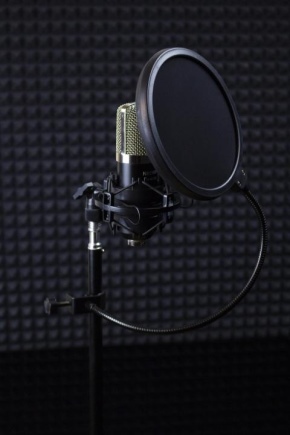
Working with sound at a professional level is a whole area of the show industry, equipped with the most sophisticated acoustic equipment and many auxiliary accessories. The microphone pop filter is one such element.
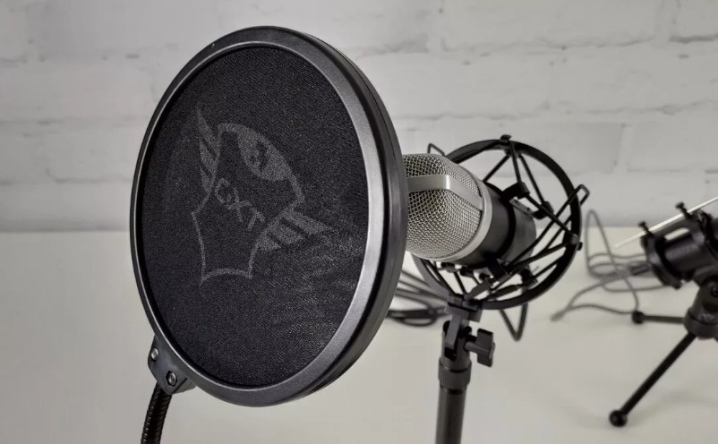
What is a microphone pop filter?
Pop Filters are simple yet highly effective acoustic microphone accessories that provide high quality sound for live performances or recordings. Most often they are used indoors, and in open spaces they are used complete with wind protection, since the pop filter significantly improves the sound quality, but does not save from air currents in strong winds.

Device and principle of operation
The accessory is a round, oval or rectangular frame with a flexible gooseneck fastening. A thin, sound-permeable mesh structure is stretched over the frame. Mesh material - metal, nylon or nylon. Principle of operation consists in the fact that the mesh structure of the overlay filters the sharp air currents emanating from the breathing of the performer when the vocalist or reader pronounces "explosive" sounds ("b", "p", "f"), as well as whistling and hissing ("s" , "W", "u"), without affecting the sound itself.
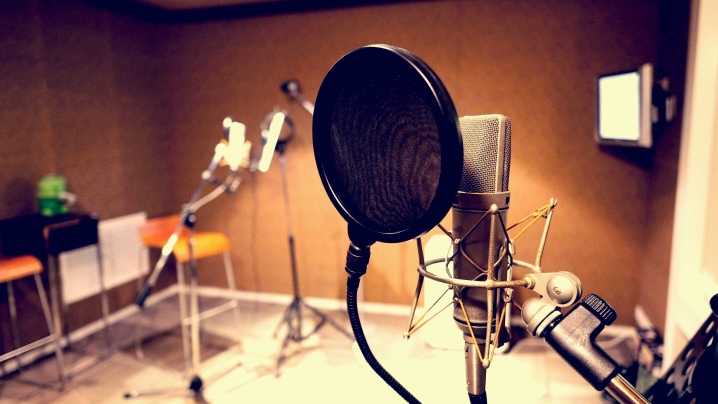
Why is it needed?
Pop filters are devices for filtering sound. Prevents sound distortion during recording. They suppress the so-called pop-effects (those very characteristic pronunciations of some consonants) that affect the microphone membrane during singing or speaking. This is especially noticeable when working with female voices. Pop effects can distort the entire performance. Sound engineers even compare them to the beat of a drum.
Without a good pop filter, recording engineers will have to spend a lot of time editing the clarity of the soundtrack and sometimes end up with dubious success, if not even nullify the recording altogether. Besides, pop filters protect expensive microphones from common dust and wet salivary micro-droplets that spontaneously escape from the mouths of speakers.
The salt composition of these tiny droplets can seriously damage unprotected equipment.


Varieties
Pop filters are available in two main types:
- standard, in which the filter element is most often made of acoustic nylon, other sound-permeable material, for example, nylon, can be used;
- metal, in which a thin fine-mesh metal mesh is mounted on a frame of various shapes.
Pop filters are simple devices that homebrew craftsmen successfully make from scrap materials for home use. With tasks at the amateur level, such pop filters do a good job, but the "clumsy" look of homemade products does not fit in with modern definitions of studio style and interior aesthetics. And at a cost, among the impressive assortment, you can find quite an affordable model for any budget of very good quality. Is it worth wasting time fiddling with making a pop filter yourself, which you may not even want to use at home?

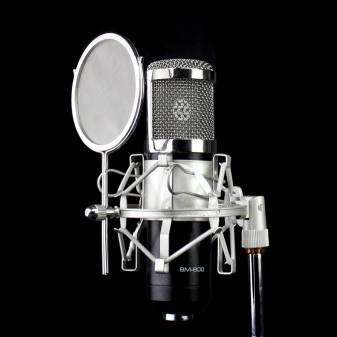
Brands
For professional studios, we purchase branded equipment of proper quality and impeccable design. Let's talk about some brands for the production of acoustic equipment. In the assortment of these companies, among the many names, there are also pop filters that experts recommend using when working with sound.
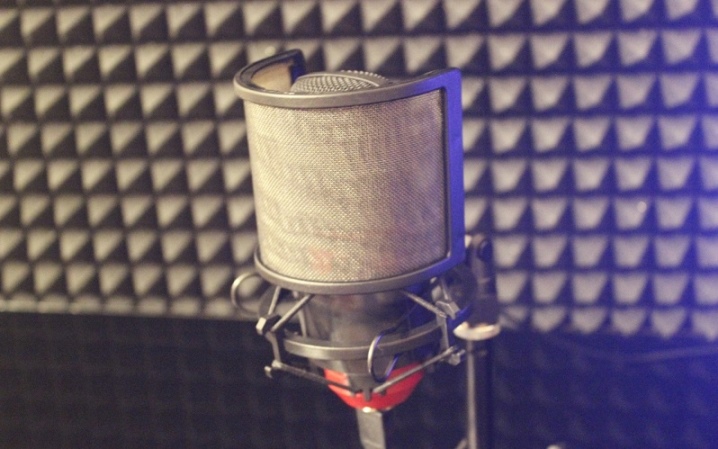
AKG
Austrian manufacturer of acoustic equipment AKG Acoustics GmbH is currently part of the Harman International Industries concern. The products of this brand are widely recognized in studio and concert applications. Pop filters for microphones are one of the items in the company's numerous assortment. The AKG PF80 filter model is versatile, filters out breathing noise, suppresses the sounds of "explosive" consonants when recording vocal performances, has a firm attachment to the microphone stand and an adjustable "gooseneck".
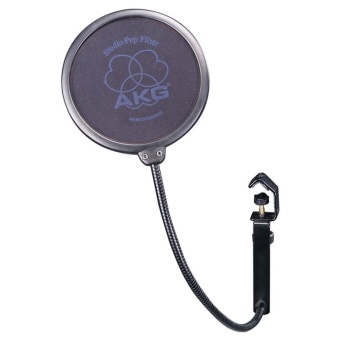
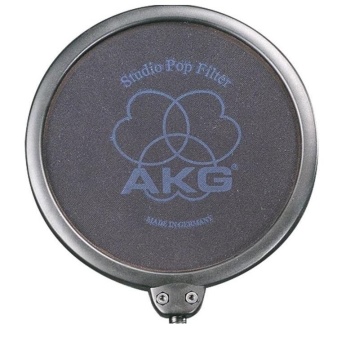
K&M of the German company Konig & Meyer
The company was founded in 1949. Famous for the production of high quality studio equipment and all kinds of accessories to it. A significant part of the assortment is patented by the company, there are rights to their trademarks. The K&M 23956-000-55 and K&M 23966-000-55 filter models are mid-range gooseneck pop filters with a double nylon cover on a plastic frame. Features a locking screw for a firm hold on the stand, which protects the surface of the microphone stand from damage.
Double protection allows you to successfully suppress breathing noise and dissipate extraneous sound interference.
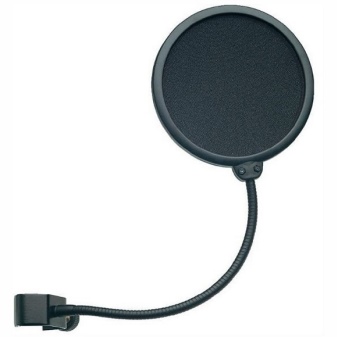
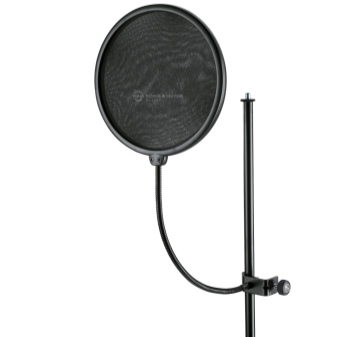
Shure
The American corporation Shure Incorporated specializes in the production of audio equipment for professional and domestic use. The range also includes audio signal processing. The Shure PS-6 pop filter is designed to suppress the "explosive" sounds of some consonants on the microphone and eliminate the performer's breathing noise during recording. Has 4 layers of protection. At the first, sounds from "explosive" consonants are blocked, and all subsequent ones step by step filter extraneous vibrations.
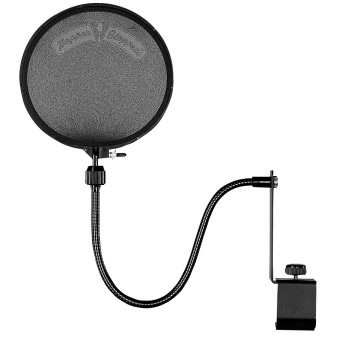

TASCAM
The American company "TEAC Audio Systems Corporation America" (TASCAM) was founded in 1971. Based in the state of California. Designs and manufactures professional recording equipment. This brand's pop filter model TASCAM TM-AG1 is designed for studio microphones.
Has high acoustic characteristics. Mounts on a microphone stand.
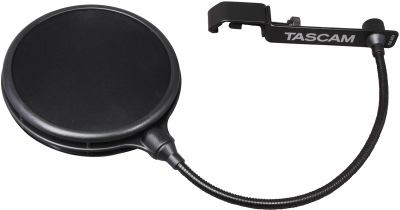
Neumann
The German company Georg Neumann & Co has existed since 1928. Produces acoustic equipment and accessories for professional and amateur studios. The products of this brand are known for their reliability and high sound quality. Acoustic accessories include the Neumann PS 20a pop filter.
This is a high quality model that is expensive in terms of cost.
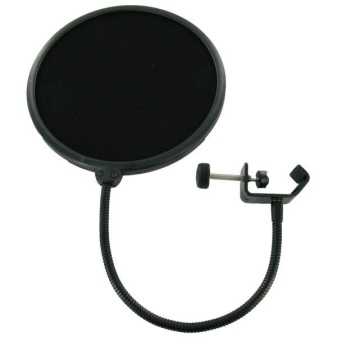
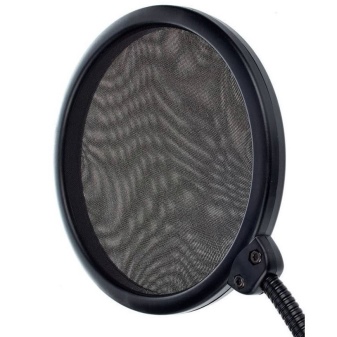
Blue Microphones
The relatively young company Blue Microphones (USA, California) was founded in 1995. Specializes in the development and production of models of various types of microphones and studio accessories. Consumers note the really high quality of the acoustic equipment of this company. This brand's pop filter, shortly named The Pop, is a robust and durable option. Has a reinforced frame and a metal mesh. The gooseneck mount provides a secure fit to the microphone stand with a special clip. It is not cheap.
This is just a small part of the wide range of studio accessories from companies and manufacturers of acoustic equipment scattered around the world.
What to choose depends on the needs and financial capabilities of a particular buyer.
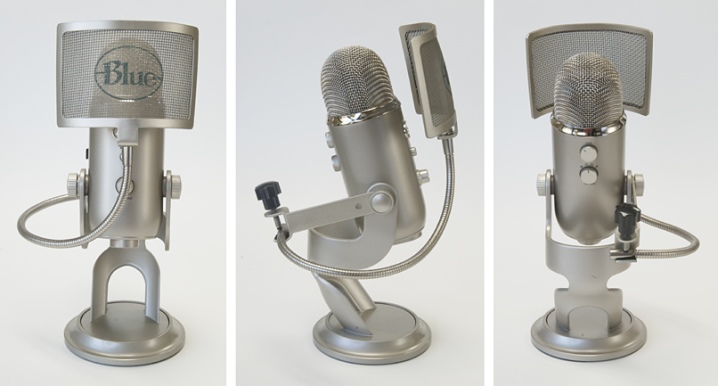
You can see a comparison and review of microphone pop filters below.













The comment was sent successfully.